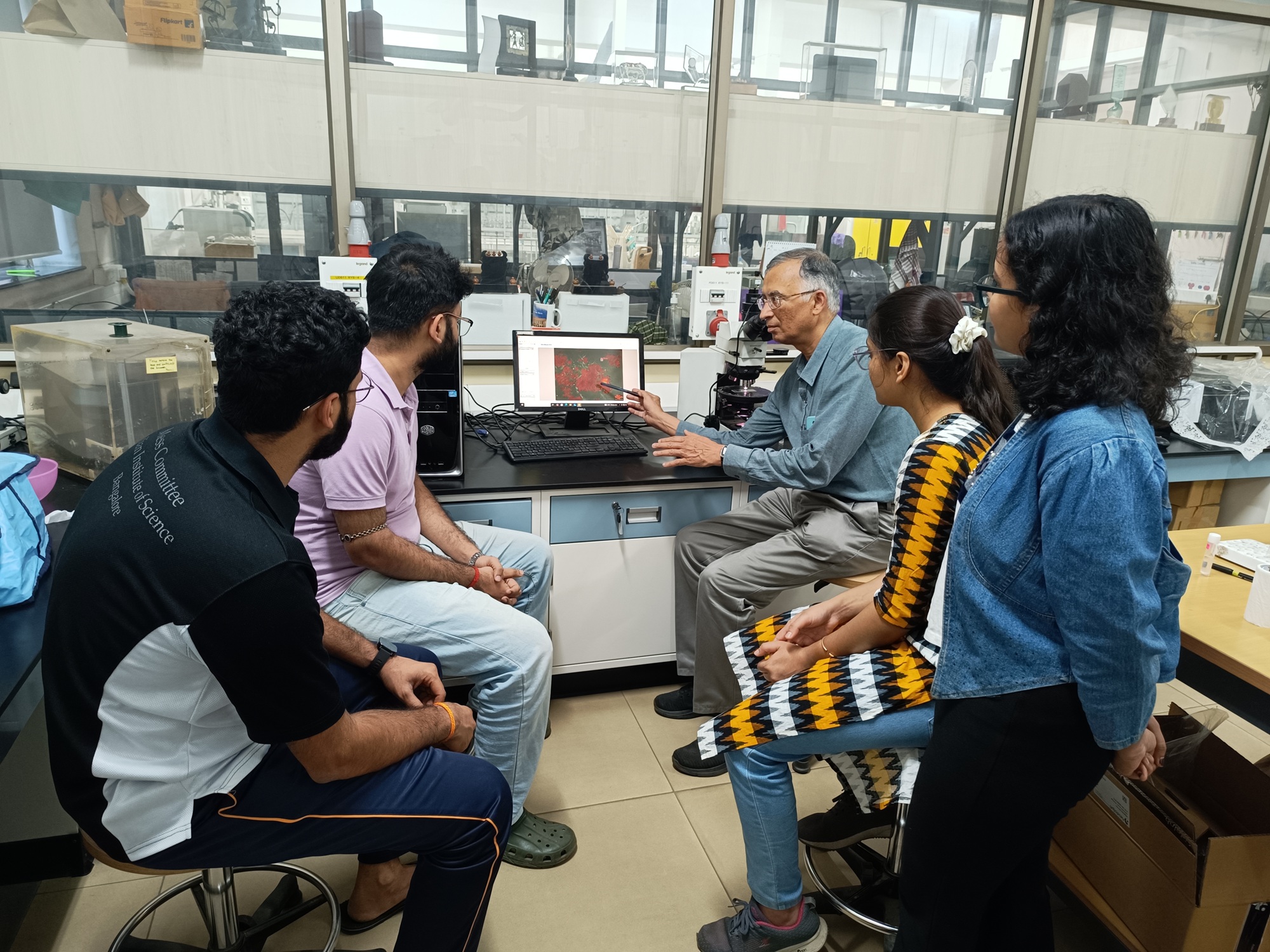30 June 2025
– Divyanshu Bhatt
Researchers at the Indian Institute of Science (IISc) have developed a unique luminescent probe that uses terbium, a rare earth metal, to sense the presence of an enzyme called β-glucuronidase, which can potentially aid in the detection of liver cancer.
β-glucuronidase is an evolutionarily conserved enzyme found across life forms – from microbes to plants and animals. Its core function is to break down a sugar acid called glucuronic acid. Beyond its biological omnipresence, the enzyme also doubles as a critical biomarker for liver cancer. In fact, an upsurge in β-glucuronidase often accompanies colon, breast, and renal cancers, as well as infections of the urinary tract and AIDS.
“Conventional methods of colorimetry and fluorescence for detecting such enzymes are often restricted by sensitivity or interference from background signals. The ability of rare earth metals to have long-lived excited states allows us to filter out short-lived background fluorescence, resulting in a much clearer signal,” says Ananya Biswas, former PhD student at IISc and co-first author of the paper published in Chemistry.
The roots of the project trace back nearly a decade, beginning with the team’s experiments on metal ions and their gel-forming properties. The team found that terbium ions couched in a gel matrix derived from bile salts can emit green fluorescence.
Within the same gel matrix, the team added an organic molecule called 2,3-DHN (2,3-Dihydroxynaphthalene) “masked” with glucuronic acid. When β-glucuronidase slices this modified molecule, 2,3-DHN gets released. The researchers then shined UV light on the sample.
“The free 2,3-DHN acts as an ‘antenna’ – absorbing UV light and transferring the energy to the terbium ions nearby, greatly enhancing their green emission,” explains Uday Maitra, Honorary Professor in the Department of Organic Chemistry, IISc, and corresponding author of the study. “The gel matrix … ensures sufficient proximity between the ‘antenna’ and terbium ions, facilitating efficient energy transfer.”

Luminescent paper discs under UV lamp: (1) without enzyme; (2), (3) and (4) with β-glucuronidase enzyme. In the presence of the enzyme, the discs show strong green luminescence (Image courtesy: UM Group)
For ease of application, the team designed this assay as a simple paper-based sensor by anchoring the gel matrix onto a paper disc. When β-glucuronidase pre-treated with modified 2,3-DHN is added, the disc exhibits a much stronger green glow under UV light.
What is unique about this technique is the analysis. Unlike conventional high-end fluorescence detection systems, these sensors can be analysed using a UV lamp and ImageJ, an open source, freely accessible software, making this technique ideal for resource-limited settings. Using this protocol, the Limit of Detection (LOD) – the lowest concentration of enzyme that can be reliably detected – came out to be 185 ng/mL. To put this in perspective, β-glucuronidase levels of around 1,000 ng/mL are typically associated with the onset of decompensated cirrhosis, an advanced stage of liver disease.
With liver cancer claiming more lives each year, such a technological advance is both timely and promising. Given the wide clinical relevance of β-glucuronidase as a biomarker in different types of cancers, neonatal jaundice, and NSAID-induced toxicity, this sensor offers a potentially powerful screening tool.
The authors say that clinical studies will still need to be carried out to validate the assay. But they are hopeful that such sensors can bring down the cost of detecting clinically significant biomarkers.

Uday Maitra (third from right) with students in the lab (Photo courtesy: UM Group)
REFERENCE:
Sakthivel S, Biswas A, Maitra U, Turn-On Luminescent Detection of Liver Cancer Biomarker β-Glucuronidase Using a Terbium-Based Paper Sensor, Chemistry (2025).
https://aces.onlinelibrary.wiley.com/doi/10.1002/asia.202401975
CONTACT:
Uday Maitra
Honorary Professor
Department of Organic Chemistry
Indian Institute of Science (IISc)
Email: maitra@iisc.ac.in
Phone: +91-80-22932690
Website: https://orgchem.iisc.ac.in/uday-maitra/
NOTE TO JOURNALISTS:
a) If any of the text in this release is reproduced verbatim, please credit the IISc press release.
b) For any queries about IISc press releases, please write to news@iisc.ac.in or pro@iisc.ac.in.



